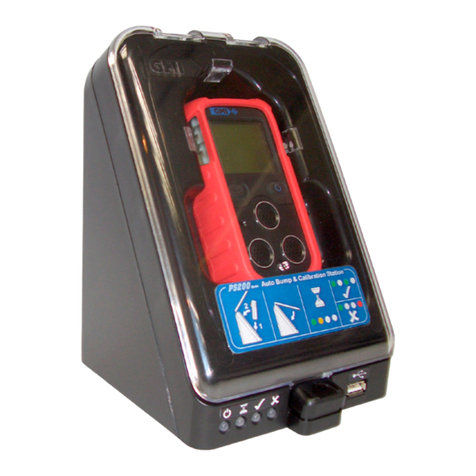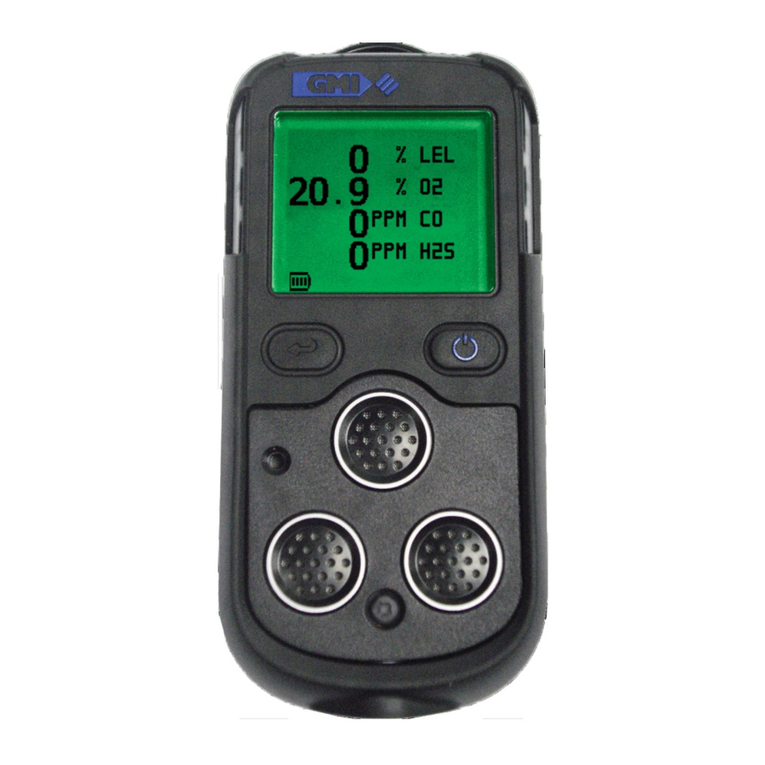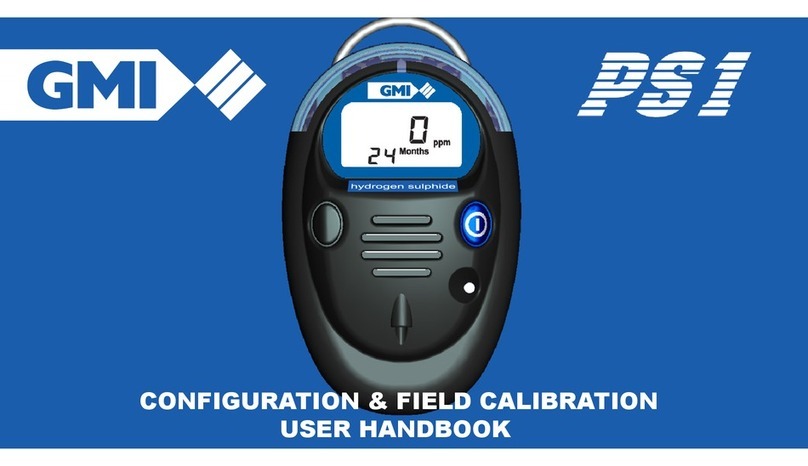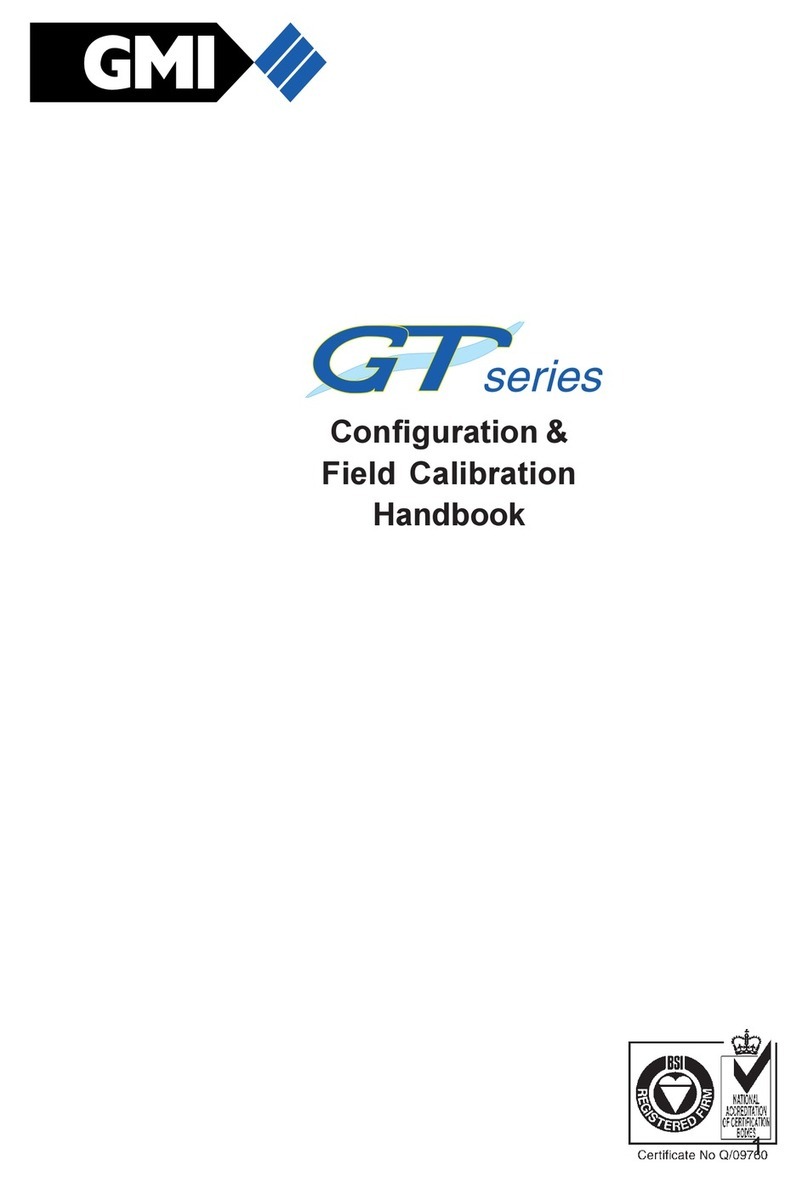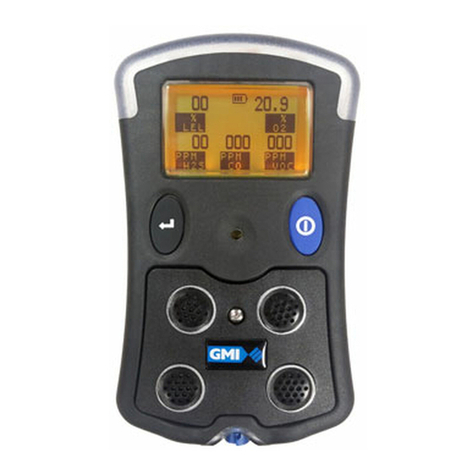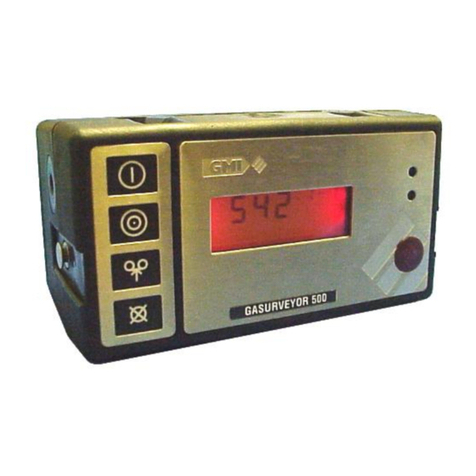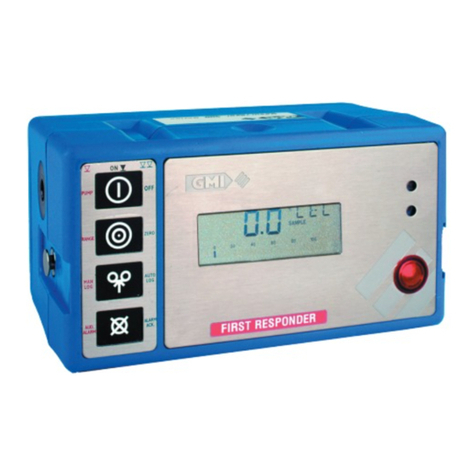
ii
V!SA - USER HANDBOOK
SAFETY
• The instrument
trained personnel in a safe area.
• Batteries:
use.
See Section 4 : OPERATOR MAINTENANCE.
• Only GMI replacement parts should be used.
• and operational guidelines.
•
•
94/9/EC
AREAS OF USE
than 21% Oxygen.
• The instrument must be regularly serviced and calibrated by fully
trained personnel in a safe area.
• Batteries:Alkalinebatteries or *Rechargeablebattery pack must be
exchanged (*and recharged) in a safe area and fitted correctly before
use. Never use damaged batteries or expose to extreme heat.
See Section 4 : OPERATOR MAINTENANCE.
• Only GMI replacement parts should be used.
• If the instrument detects gas, follow your own organisation’s procedures
and operational guidelines.
• Gas can be dangerous and care should always be taken in its use.
• This equipment is designed and manufactured to protect against other
hazards as defined in paragraph 1.2.7 of Annex II of the ATEX Directive
94/9/EC
Any right of claim relating to product liability or consequential damage to any
third party against GMI is removed if the above warnings are not observed.
AREAS OF USE
Exposure to certain chemicals can result in a loss of sensitivity of the flammable
sensor. Where such environments are known or suspected it is recommended
that more frequent response checks are carried out. The chemical compounds
that can cause loss of sensitivity include Silicones, Lead, Halogens and Sulphur.
Do not use instrument in potentially hazardous atmospheres containing greater
than 21% Oxygen.
STORAGE, HANDLING AND TRANSIT
The batteries in the rechargeable pack contain considerable energy and care
shouldbe taken in theirhandling and disposal.
Theinstrumentis designed tohandleharsh environments. The instrumentis sealed
toIP65 and the sensingelements, sample inletand charging socket sealedto IP54.
Ifnotsubject to misuse or maliciousdamage,the instrument will providemanyyears
ofreliableservice.
Theinstrumentcan contain electrochemical sensors.Underconditions of prolonged
storagethesesensorsshouldbe removed. The sensor containspotentiallycorrosive
liquidandcareshouldbetakenwhen handling or disposing of thesensor,particularly
whenaleakissuspected.
Thereis no specialprecautions to be taken when the instrument isin transit.
WARRANTY
The GMI V!SA instrument has a warranty against faulty goods or workmanship
of 5 years. Consumable and Mechanical parts are not included in this. These
are covered under GMI standard warranty conditions. For details, please contact
GMI Ltd (UK).
